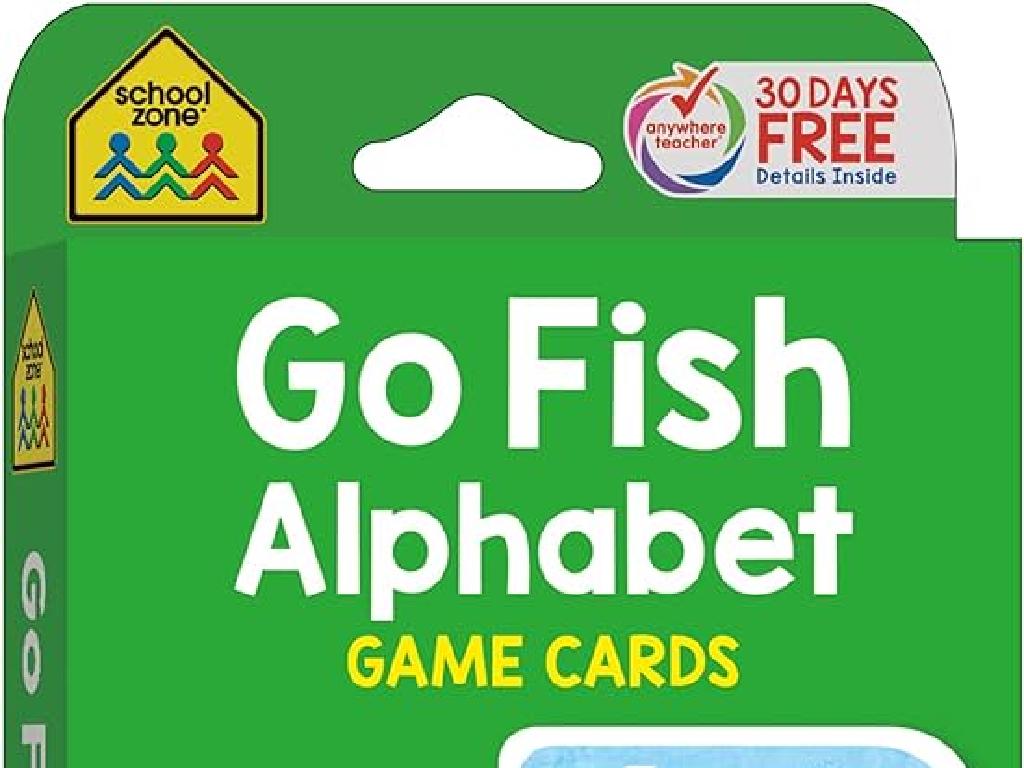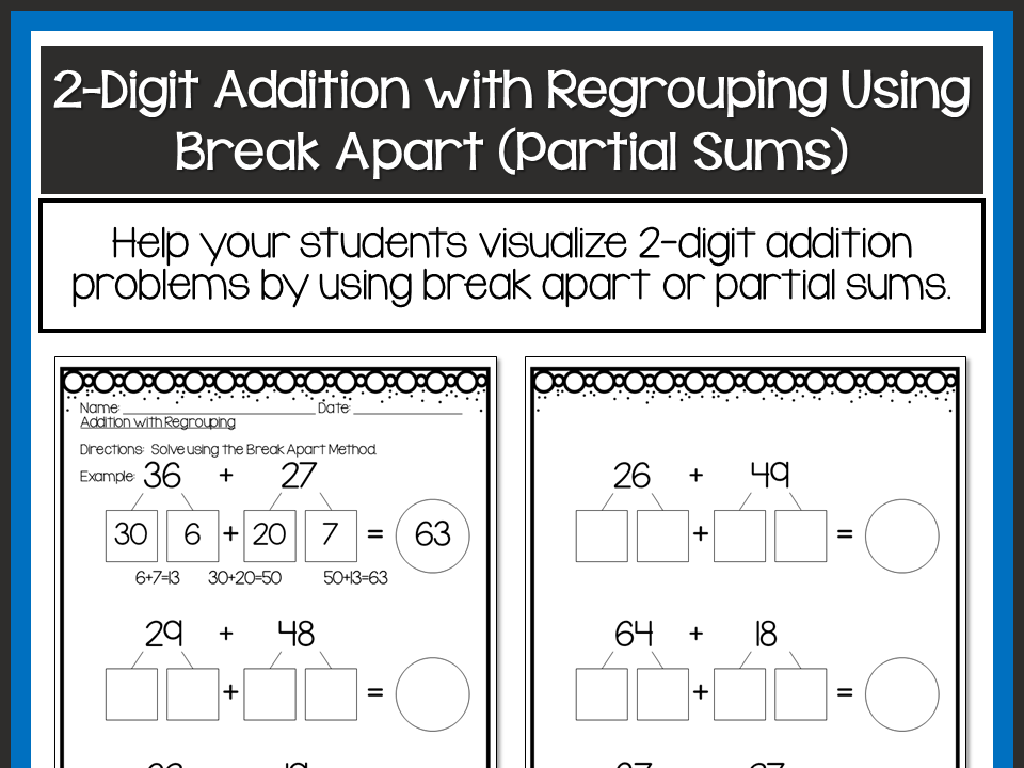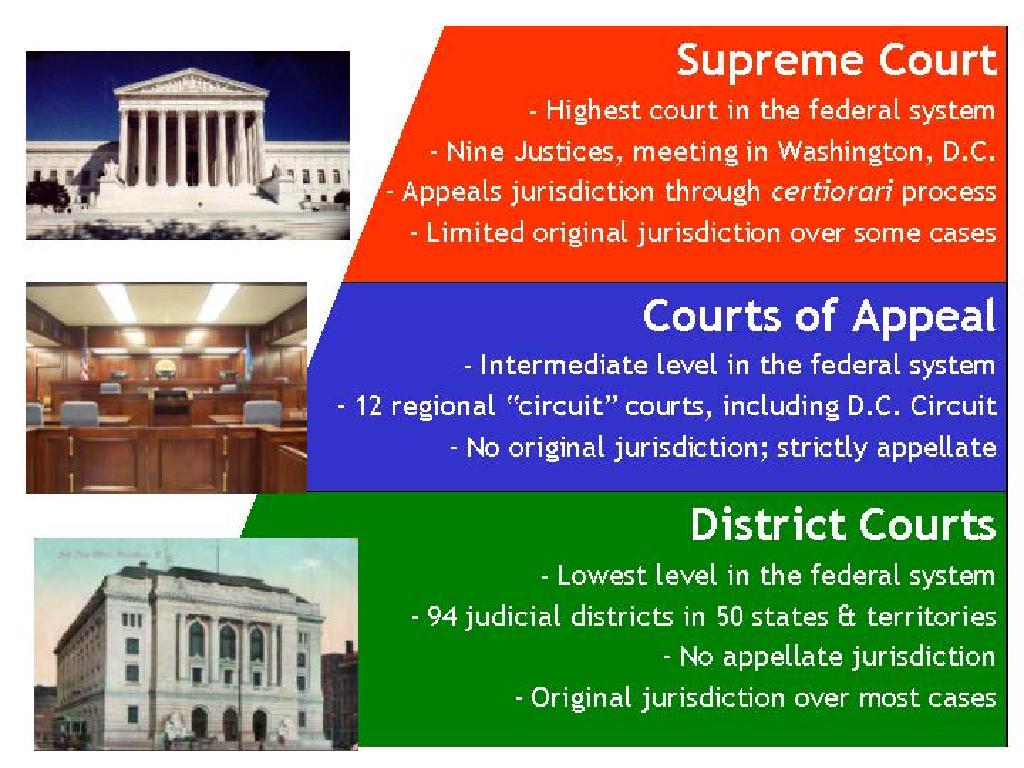Add Two Multi-Digit Numbers
Subject: Math
Grade: Fourth grade
Topic: Addition
Please LOG IN to download the presentation. Access is available to registered users only.
View More Content
Welcome to Addition: Adding Big Numbers!
– Explore adding multi-digit numbers
– Steps to successful addition
– Line up the digits, add one column at a time, carry over if needed
– Addition’s role in daily life
– Used for budgeting, cooking, and time management
– Practice problems for mastery
|
This slide introduces the concept of adding multi-digit numbers, a fundamental skill in mathematics. Begin by engaging students with the idea that addition is like going on an adventure where we combine numbers to discover new ones. Explain the process step by step, emphasizing the importance of aligning the digits correctly and carrying over when the sum exceeds 9. Relate the importance of addition to everyday activities such as managing money, following recipes, or planning their day, to help students understand its practical applications. Conclude with practice problems to reinforce the concept, ensuring students are comfortable with the process and understand its utility in their daily lives.
Review of Addition Facts
– Recap: Adding single digits
– Remember how we add numbers like 2 + 3?
– Use facts for bigger numbers
– Knowing 2 + 3 helps with 12 + 13
– Activity: Addition flashcards!
– We’ll practice with fun flashcards
|
Begin the lesson with a quick review of adding single-digit numbers, which students are already familiar with. Reinforce the concept that these basic addition facts are the building blocks for adding larger numbers. For example, if they know that 2 + 3 equals 5, this can help them when adding 12 + 13 by focusing on the last digits. The activity involves using flashcards to quickly identify sums of single-digit numbers, which serves as a warm-up exercise to prepare for more complex addition. Have a set of flashcards ready, each with a different single-digit addition problem. Students can work individually or in pairs to solve them. This interactive activity will engage students and help refresh their memory of basic addition facts before moving on to multi-digit addition.
Understanding Place Value
– What is Place Value?
– It’s the value of where a digit is in the number.
– Blocks of Numbers: Ones, Tens, Hundreds
– Each place has a value 10 times the place to its right.
– Place Value Chart Exercise
– Fill in a chart with the correct place values.
|
This slide introduces the concept of place value, which is fundamental to understanding how to add multi-digit numbers. Start by explaining that place value determines the value of a digit based on its position within a number. Emphasize that each position represents a power of 10; for example, the further left a digit is, the greater its value. Use a place value chart in the activity to help students visualize and practice this concept. Have them break down numbers into ones, tens, and hundreds, and place the correct digits in the chart. This exercise will reinforce their understanding and prepare them for adding multi-digit numbers. Provide several examples and encourage students to ask questions if they’re unsure about where to place a digit.
Adding Multi-Digit Numbers
– Line up numbers by place value
– Ensure digits are aligned: ones under ones, tens under tens.
– Start adding from the right
– Add ones first, then tens, then hundreds, moving left.
– Understand carrying over
– If a sum is 10 or more, carry over to the next place value.
– Practice with examples
|
This slide introduces the process of adding multi-digit numbers, a fundamental skill in fourth-grade math. Emphasize the importance of lining up numbers by their place values to avoid confusion. Begin with adding the ones column and move left towards tens and hundreds, explaining that each column must be added separately. When the sum in a column is 10 or more, carry over to the next column. Provide several examples for students to practice, and use visual aids to demonstrate carrying over. Encourage students to work through problems step-by-step and to check their work carefully.
Adding Two Multi-Digit Numbers
– Start with the rightmost digits
– Add the ones place: 4 + 7 = 11
– Write down 1, carry over 1 to the tens place
– Carry over to the tens place
– Add the tens place: 3 + 6 + 1 (carry) = 10
– Continue adding each digit
– Add the hundreds place: 2 + 5 + 1 (carry) = 8
|
This slide is designed to guide students through the process of adding two multi-digit numbers. Begin by explaining the importance of aligning the numbers by their place value. Demonstrate the addition starting from the rightmost digits, which are the ones place. Emphasize the concept of carrying over when the sum exceeds 9. Continue with the tens place, remembering to add the carried number. Finish with the hundreds place. Use the example provided to walk through each step, ensuring students understand the process before moving on to practice problems. Encourage students to try their own examples and assist them as needed.
Practice Time: Adding Multi-Digit Numbers
– Now it’s your turn to practice
– Solve the given addition problems
– Add numbers column by column, starting from the right
– Write your answers on paper
– Discuss your solutions with a partner
– Explain your thinking and compare strategies
|
This slide is designed to engage students in active practice of adding multi-digit numbers. Provide a set of addition problems for students to solve independently, ensuring a range of difficulties to cater to different skill levels. Encourage neat column work to avoid errors. After solving the problems, students should pair up to discuss their answers and methods. This peer interaction helps solidify understanding and allows students to learn from each other. As a teacher, circulate the room to offer guidance and support where needed. Possible activities could include solving problems on a whiteboard, using manipulatives for visual aid, or creating their own addition problems to challenge classmates.
Common Mistakes in Adding Multi-Digit Numbers
– Align numbers by place value
– Stack numbers so ones are with ones, tens with tens
– Remember to carry over
– When a sum exceeds 9, carry the extra value to the next column
– Keep place values straight
– Write numbers clearly to avoid confusion between places
– Double-check your work
|
This slide aims to help students avoid common errors when adding multi-digit numbers. Emphasize the importance of lining up numbers by their place values to ensure accurate addition. Remind students to carry over when the sum of a column is greater than nine, and to always move the extra value to the next column on the left. Stress the need to keep place values straight and not mix them up, as this can lead to significant errors. Encourage students to double-check their work by adding the numbers again or using the inverse operation (subtraction) to verify their results. Provide practice problems that specifically target these common mistakes so students can become proficient at recognizing and correcting them.
Class Activity: Addition Relay
– Engage in an addition relay game
– Solve an addition problem individually
– Each student solves one problem before passing on
– Pass the baton after solving
– Fastest team with correct answers wins
– Accuracy is just as important as speed
|
This activity is designed to make learning addition fun through a relay race. Each student will be given a multi-digit addition problem to solve. Once they solve it, they pass the ‘baton’ to the next teammate. The baton can be any classroom object. The first team to have all members complete their problems correctly wins. It’s important to emphasize that while speed is a factor, getting the correct answer is crucial. Possible variations of the activity could include using dice to generate numbers for addition, incorporating word problems, or having students create their own problems for peers to solve.
Great Job Today, Young Mathematicians!
– Celebrate today’s addition mastery
– Homework: Addition practice worksheet
– Solve each problem using the methods learned
– Next class: Tackling subtraction
– We’ll learn to subtract numbers just like we added them
– Keep practicing and stay curious!
|
This slide is meant to wrap up the day’s lesson on adding multi-digit numbers and to set expectations for the next class. The homework assignment reinforces today’s learning and prepares students for the upcoming lesson on subtraction. Encourage students to approach their homework with the same strategies they used in class. For the next class, preview that they will apply similar techniques to subtract multi-digit numbers. Remind them that practice is key to becoming confident in their math skills and to approach challenges with curiosity and determination.





